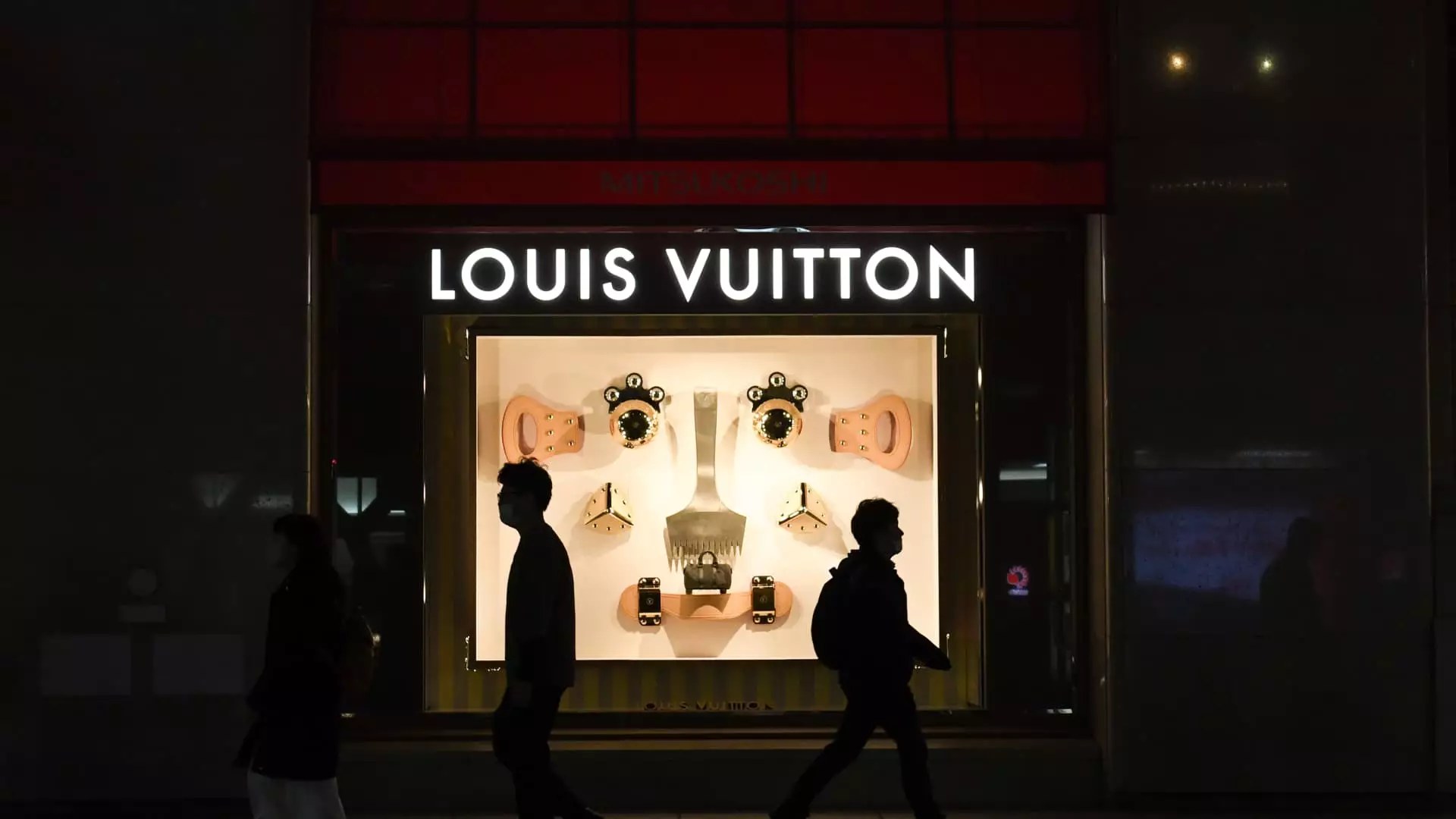In a shocking turn of events, luxury juggernaut LVMH saw its shares plummet by 8% earlier this week, momentarily surrendering its title as the world’s largest luxury brand to competitor Hermès. This staggering loss did not simply reflect a routine market fluctuation; it starkly underscored the rising pressures facing luxury brands in an economic landscape fraught with uncertainty. LVMH’s reported 3% year-on-year drop in first-quarter sales not only missed analysts’ expectations but also acted as a barometer signaling deeper issues within the luxury sector itself.
A Sector in Decline
The ramifications of LVMH’s fallout were felt far beyond its own ledger. Other established luxury brands like Kering and Burberry also experienced significant stock declines—2.5% and 4.4% respectively—highlighting the growing fears of a ripple effect throughout the luxury retail market. As Wall Street attempts to grapple with these changes, the once-stable foundation of high-end retail appears increasingly volatile. With global economic factors heavily influencing consumer spending habits, the luxury sector may no longer be the impregnable fortress it once seemed.
What Lies Beneath the Numbers?
LVMH’s trading update revealed that its various divisions performed disparately. The wines and spirits category, a traditional stronghold for the brand, saw a striking 9% decline attributable to diminishing demand from key markets such as the U.S. and China. Given the geopolitical tensions affecting global trade, one can’t help but wonder if consumer sentiment is evolving—leading to a broader reevaluation of luxury purchases. The fashion and leather goods division, accounting for a lion’s share of LVMH’s profits, didn’t fare much better either, sliding by 5%. This paints a dismal picture for a company that was once seen as immune to such market forces.
Positive numbers from Europe—recording a 2% growth—offer little solace when juxtaposed against the stark 11% drop in Asia excluding Japan. This regional disparity raises an alarming question: Are luxury brands losing ground in high-growth markets, or are economic conditions simply too harsh to navigate? Investors must be vigilant, and it seems they are already reacting with their wallets.
The Analyst Outlook: Pessimism abounds
The atmospheric shift among analysts is palpable; major firms like Citi and Jefferies have adjusted their price targets for LVMH’s stock downward significantly. With a low expectation of sequential revenue improvement in the near future, the industry as a whole must confront the unsettling reality that consumer behaviors may not normalize anytime soon. The intersection of U.S. trade policies and global supply chain instability suggests that the luxury sector is not just on shaky ground—it’s facing a potential avalanche.
As LVMH CFO Cécile Cabanis articulated during a recent conference call, the aspirational customer is historically more vulnerable during uncertain economic periods. This vulnerability, once a footnote in luxury brand narratives, is now front and center. Indeed, periods of economic pessimism often lead consumers to reassess their spending on luxury goods, forcing brands to adapt their pricing strategies.
The Tariff Tidal Wave
The looming shadows of fluctuating tariffs cast doubt on the ability of luxury brands to pass costs onto consumers. Buyers of high-end products may resist the changes, particularly as they directly feel the pinch of a potential recession. History tells us that luxury brands, while seemingly insulated by their elite clientele, are not entirely immune to economic downturns. The broader implications for LVMH and the luxury sector could be profound, leading to a reconfiguration of marketing strategies and an urgent necessity for these brands to reconnect with fluctuating consumer sentiments.
As luxury firms grapple with these evolving consumer behaviors, the days of unyielding growth may be fading. The reluctance to make significant price adjustments could jeopardize profitability, leaving firms to ponder the fine line between maintaining exclusivity and responding to market demands. Luxury brands must engage in a deeper self-reflection to identify innovative avenues to foster real connections with consumers—those aspirational clientele who may now be retreating into their shells during turbulent economic times.

Leave a Reply